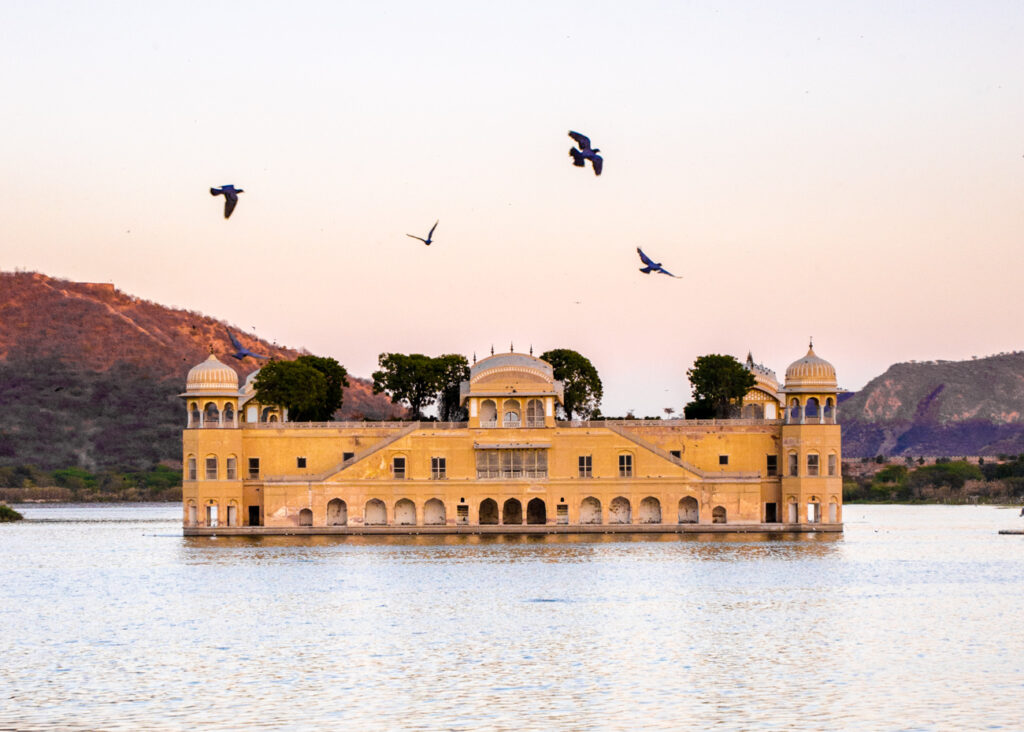Disclosure: This post contains affiliate links that I may earn a small commission from if you purchase something through them. This comes at no extra cost to you!
Jaipur is the capital of the Rajasthan state in northern India and is home to some of the country’s most amazing landmarks.
Set beneath one of the oldest mountain ranges in the world, the Aravalli Ranges, Jaipur has plenty to offer in the way of attractions. The heart of the aptly named ‘Pink City’ is washed in a vibrant pinky-red colour scheme that is home to UNESCO World Heritage sites, bustling street markets and the epitome of Indian culture. There are also some of the finest examples of architecture in the country, including three enchanting hilltop forts that overlook the city (Amer, Jaigarh and Nahargarh) and ancient palaces dotted throughout.
Jaipur is part of the famous Golden Triangle route with Agra and Delhi and is certainly not a destination to be skipped. In this detailed guide I’ll explain everything you need to know about Jaipur, including descriptions of its best sights, how to get around the city, when to visit and plenty more.
Table of Contents...
Toggle
Useful information for Jaipur
- Country: India
- Population: 8.7 million
- Language: Both Hindi and English are widely spoken across India.
- Currency: Indian rupees (INR). £1/$1 = 100/82 INR
- SIM cards: I highly recommend getting a SIM card for your travels in India. This means you can use apps like Uber or Ola for cheaper taxi fares but it also means you’re always connected to the world, never needing to rely on WiFi. Get an E-SIM here: India: eSIM Roaming Mobile Data Plan
- Visa info: Getting into India isn’t the most straight forward process. Unless you’re Indian, you’ll need to apply for an E-visa before arriving.
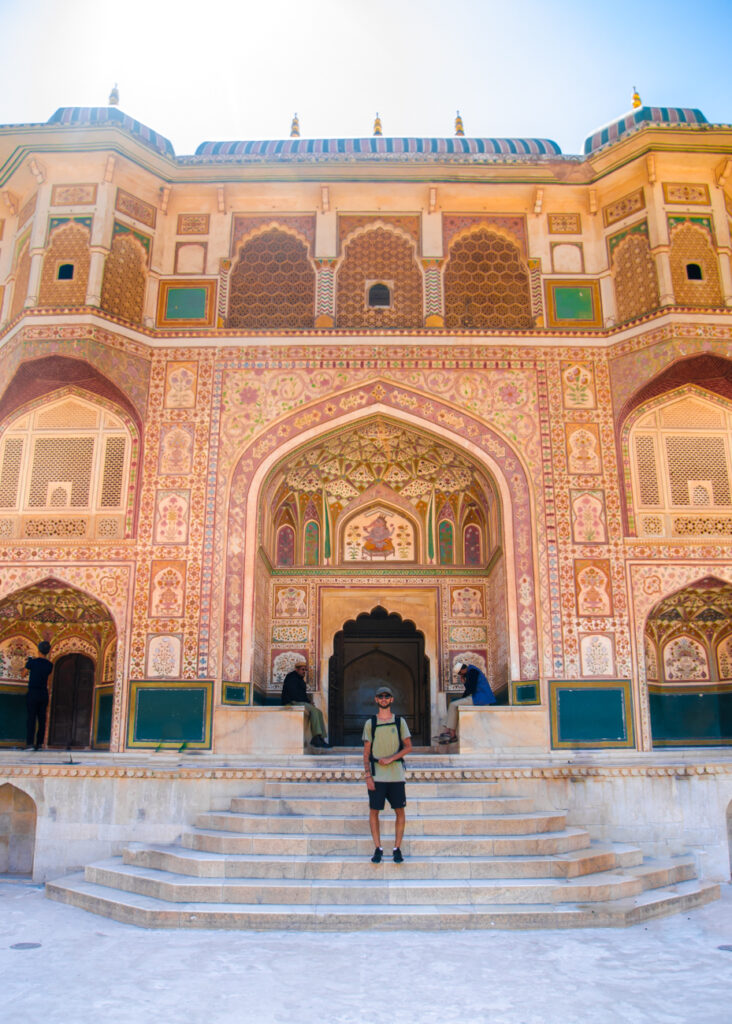
Where is it
The Pink City is located in the Rajasthan state of northern India, 268km from the country’s capital, New Delhi.
Check it out on the interactive map below.
How to get to Jaipur
- Flight
Jaipur has a well-connected international airport with flights arriving daily from all over the world.
The airport is 12km from the heart of the city and there are two main ways of getting between the two, either by as bus or taxi. The hassle-free option I recommend is to get a SIM card on arrival and hail an Uber to avoid potential taxi scams and get a reliable door-to-door service.
- Train
Train rides in India are an experience in themselves. This is the mode of transport I used to travel around the Golden Triangle of the country (Agra, Jaipur and Delhi) and cannot recommend it enough. Trains are an extremely cheap and fun way to travel inter-city and give you a chance to see local life in action, away from the popular tourist sites.
As an example, the 4.5 hour journey from Delhi to Jaipur costs just $6 USD online. Use 12Go to find the best deals on train tickets to Jaipur from virtually anywhere in the country.
- Bus
Overland buses are another popular way to travel in the country and are incredibly budget friendly.
An overnight tourist bus from Delhi will take around 6 hours and is best booked in advance. Use this link to 12Go to secure a seat.
When to go
The best time to visit Jaipur is in the winter, between December and February. This will avoid the monsoon rains from June to October and the intense heat from March to June. After March the crowds will be even bigger than normal and the temperature becomes so hot that it’s close to unbearable.
- Winter is late November to February
- Summer is March to May
- Monsoon season is June to October
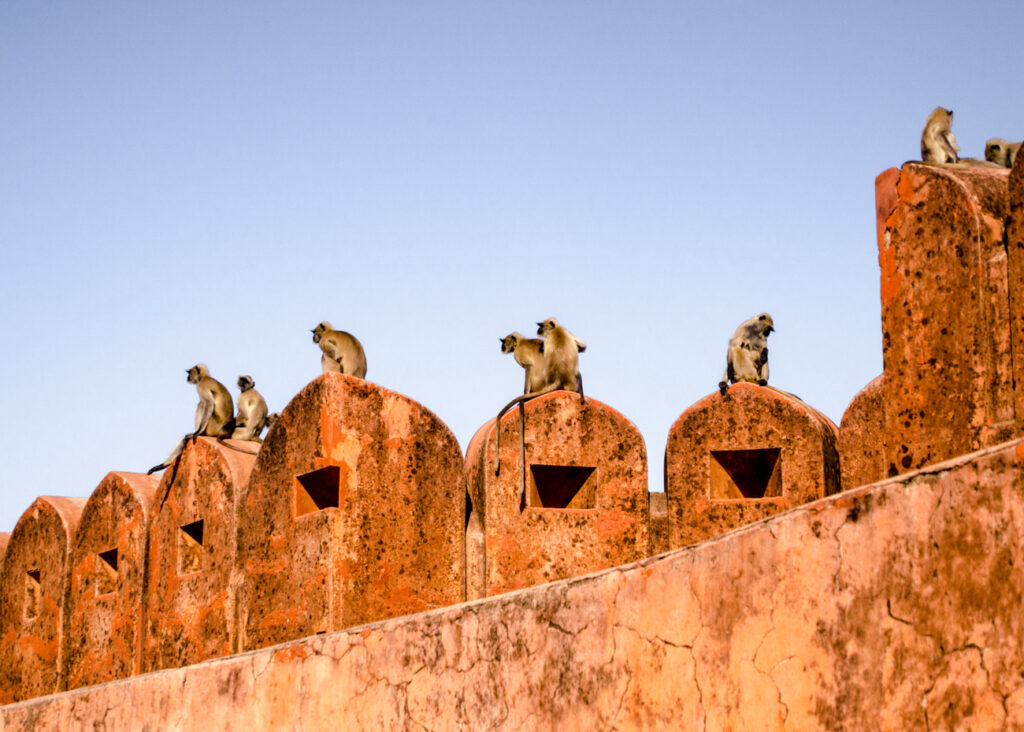
How to get around Jaipur
- Uber or Ola
Uber is the option I recommend as it is safe and you don’t need to worry about magical price changes and scams like you would in a taxi. Rides are super affordable and can be paid on card so you never need to fiddle around with cash.
- Rickshaw or taxi
Rickshaws may offer a cheaper price than Grab or Ola, but I had some problems in India where I would reach my destination and they would ask for more money than previously agreed, causing an issue. They also like to try and stop at their friend’s shops to encourage you to buy souvenirs and things like that, so be aware of that. To be on the safer side, just use Uber unless you’re desperate and very good at haggling.
- Tours
Guided tours are a great way to get around, especially somewhere as crazy as Jaipur. Travel in an air conditioned vehicle with a knowledgeable local guide and learn lots throughout the day. You’ll be picked up and dropped off at your accommodation and cram in many sights along the way, as well as meet like-minded travellers.
Companies like GetYourGuide and Viator offer great tours in Jaipur. Check out some of the awesome tours available below.
Where to stay in Jaipur
Accommodation choices in Jaipur are next to infinite and you’ll find great hostels, guesthouses and hotels city-wide suitable for any budget, some for as little as $1 per night!
Find somewhere you like on Booking.com or Hostelworld.
The best rated hostel in Jaipur is Gyspy Monkey.
Budgeting for Jaipur
India is one of the most budget-friendly countries in the world to travel in.
Buses, trains and tuktuks are extremely cheap in northern India and a tuktuk or Uber ride across the city could cost just $1-$2. For the best rates on intercity travel, aim to catch an overnight bus or train. Use 12Go for booking bus and train journeys in India.
Entrance fees are also affordable, with the average fort or palace costing around 200 INR ($2.50) to enter. It’s worth noting that in India the entrance fees for attractions are different for Indian nationals and foreigners, with foreigners usually paying around 10 times more. To save money, get this: Jaipur: Skip-the-Line Entry Ticket to 8 Attractions for just $6!
Food and drink is so well priced here that honestly sometimes it feels like you’re dining for free. A full plate of samosas from a street vendor could just just $1-$2, or local dishes at a restaurant are roughly $3-$5. There were a few nights where I ordered western food to my hotel using Uber Eats (don’t judge me, I got pretty sick of curry) and for huge portions and delivery it was usually less than $3.
Accommodation is the thing that can add up fast, but still remains super affordable. Shared hostel dorms can cost anywhere from $1-$8 per night, whereas a private room in a hostel, hotel or guesthouse could be $10 – $20 per night. It largely depends on your wants and needs, but either way the value for money is amazing! Use Booking.com or Hostelworld to get the best deals.
In summary, a backpacker’s budget (hostel dorm, eating local food, using tuktuks to get around) could be as little as $20 per day.
On a more mid-range budget (private room, eating western food, booking tours) a budget of $40 per day will cover everything.
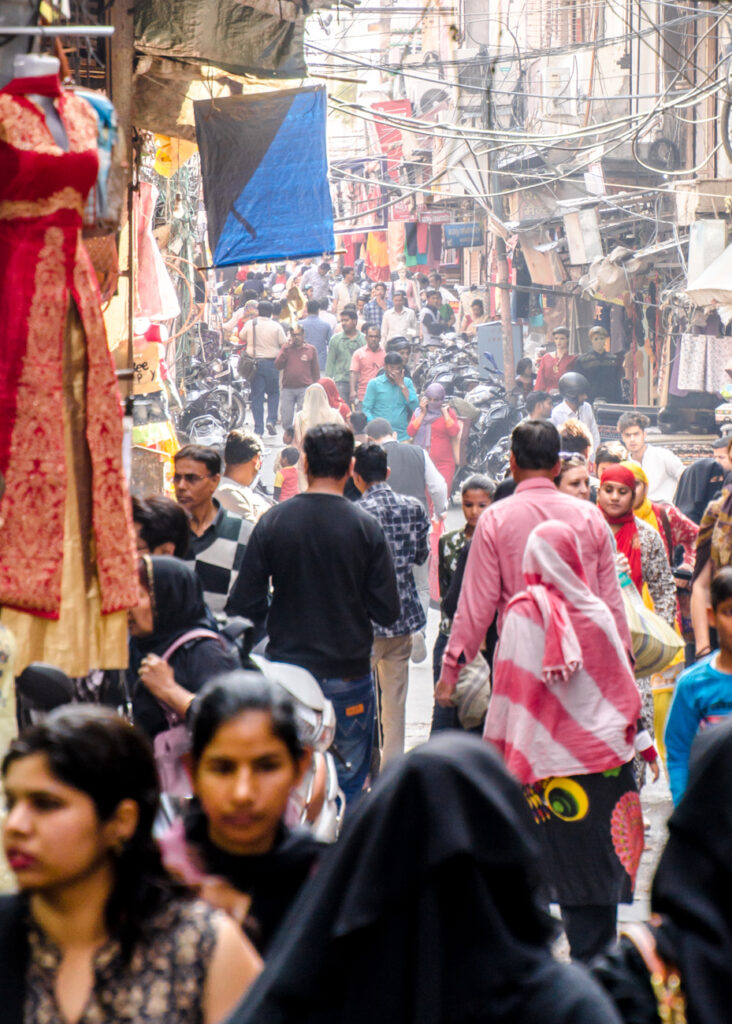
Save money by getting entrance tickets with skip the line privileges to 8 of the city’s most popular attractions through this link for just £5/$6 in total!
How long to stay
To see everything Jaipur has to offer, I think 3-4 days is ideal. This gives you enough time to see everything on this travel guide and gain a true representation of the Pink City.
A brief history of Jaipur
Construction of the city began in 1726 after its founder, Maharaja Sawai Jai Singh II, decided to shift his HQ from Amer to Jaipur due to a rise in population. It took him four years to complete the major palaces and roads in Jaipur and build the 6m high city wall and 8 gates around its perimeter.
Jaipur didn’t gain the name ‘The Pink City’ until 1876, when much of its centre was painted in a reddish-pink by the ruler at the time, Sawai Ram Singh I, as a sign of hospitality to welcome the visiting Prince of Wales (who later became King Edward VII). The Maharaja also constructed Albert Hall, a large concert hall and now a museum, in honour of Prince Albert. Today, it is the oldest museum in the state of Rajasthan and somewhere that will be covered later in this guide!
Since then, the city has kept its vibrant colours and many streets and houses remain pink, making Jaipur somewhat unique. In fact, it is actually against the law to erect a building that isn’t pink!
In 2019, the Pink City was inscribed as a UNESCO World Heritage Site and is now one of the most visited cities in the country.
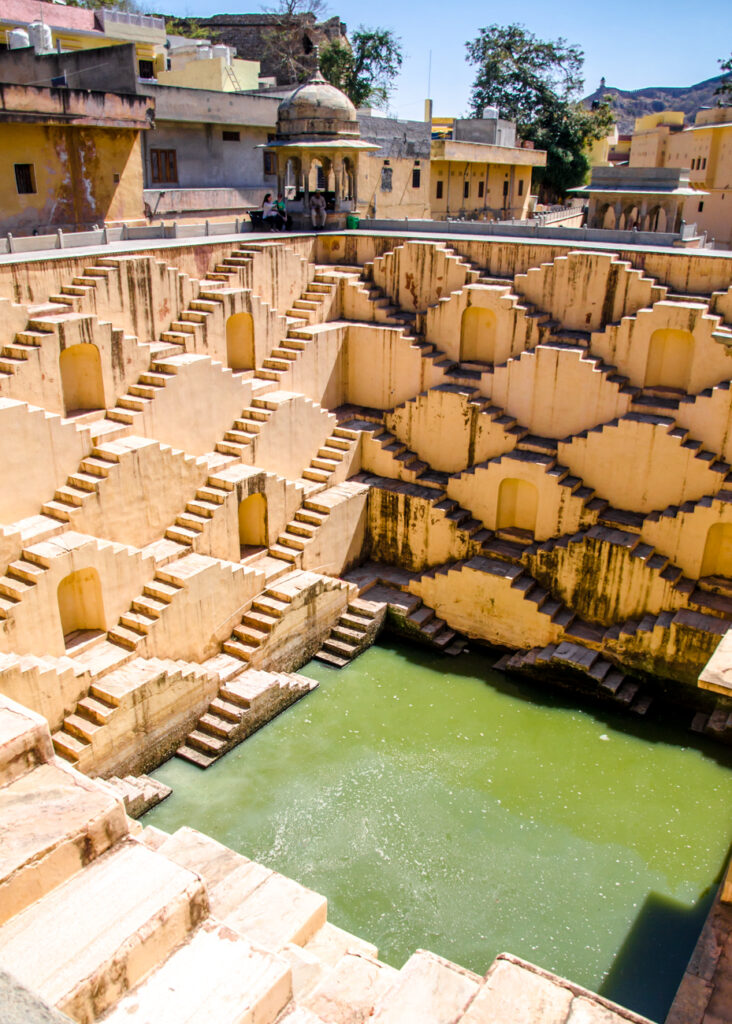
The 8 best things to see in Jaipur
1. City Palace
- Price: Tickets for foreigners are 700 INR and for Indian nationals it’s 200 INR.
- Opening times: 9:30am – 5pm
- Location: Here on Google Maps
The City Palace is the present day residence of the royal family of Jaipur and, like most of the Pink City, is made of red and pink sandstone with elaborate details of white marble.
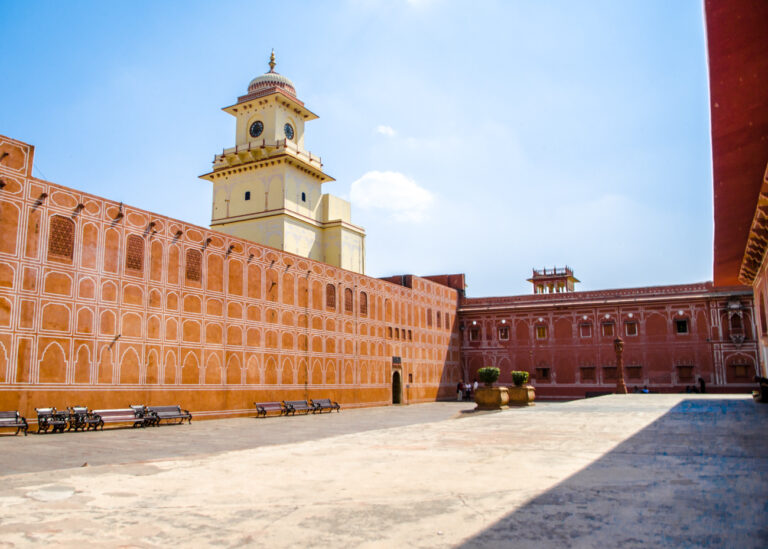
Located in the heart of the Pink City, conveniently near to the next two stops on this guide, the palace was built between 1729 and 1732 and really feels somewhere straight out of a Bollywood movie.
As the population of Jaipur grew, the Maharaja decided it was time to shift his headquarters from Amer Fort, the former home of the royals which overlooks the city, and so the City Palace was erected.
Featuring large brass doors with intricate designs, stunning courtyards, pavilions, museums, archways and gardens, the City Palace is number one on this list for a reason – you simply can’t miss it out!
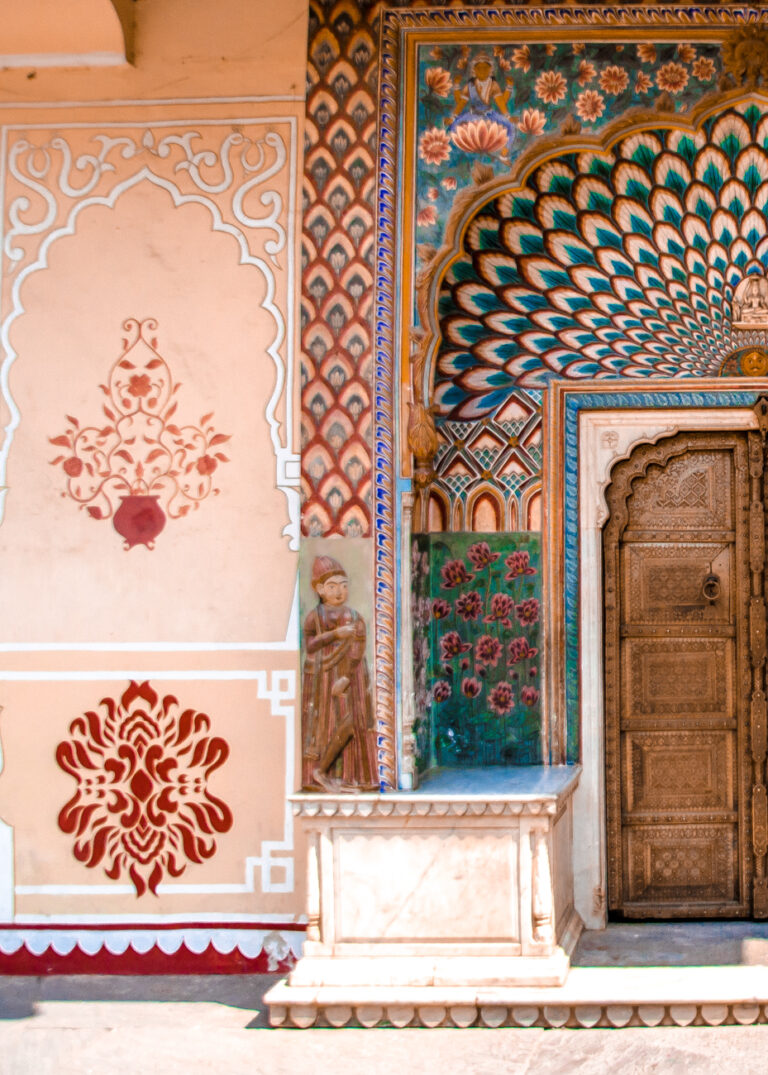
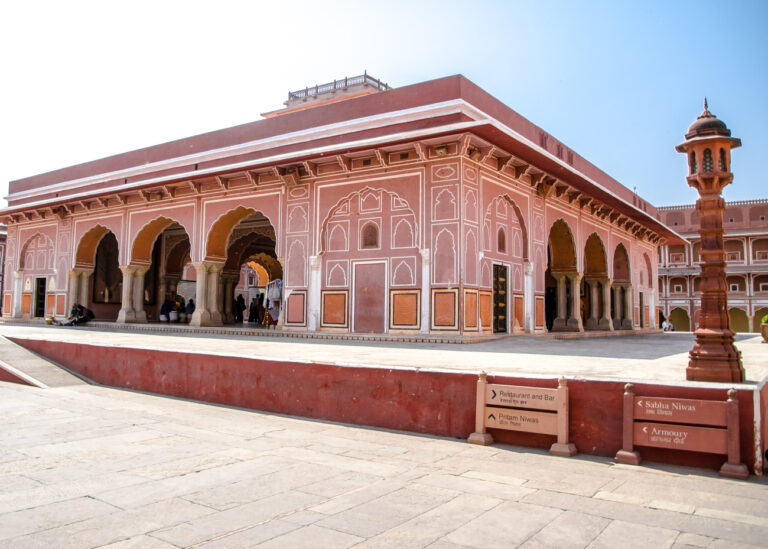
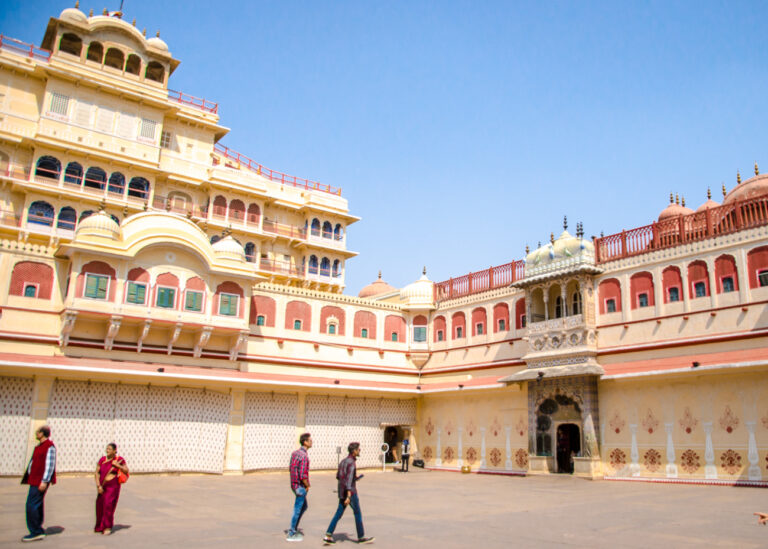
The ancient palace is a visual masterpiece and one of Jaipur’s true architectural wonders.
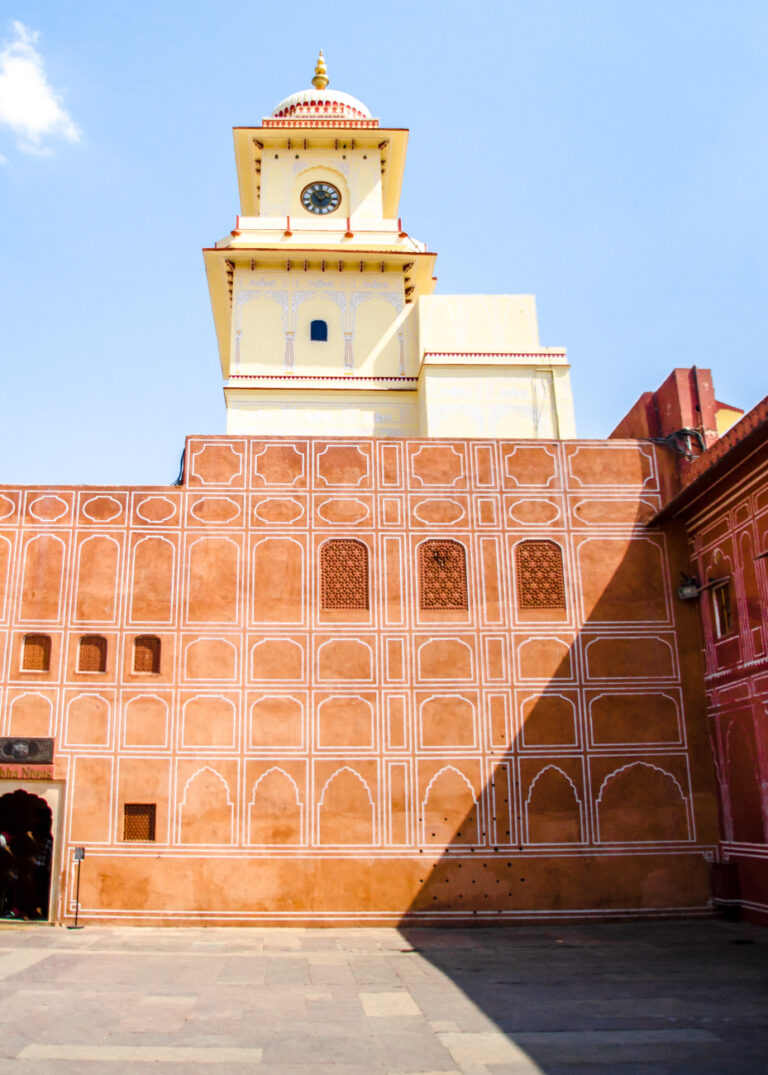
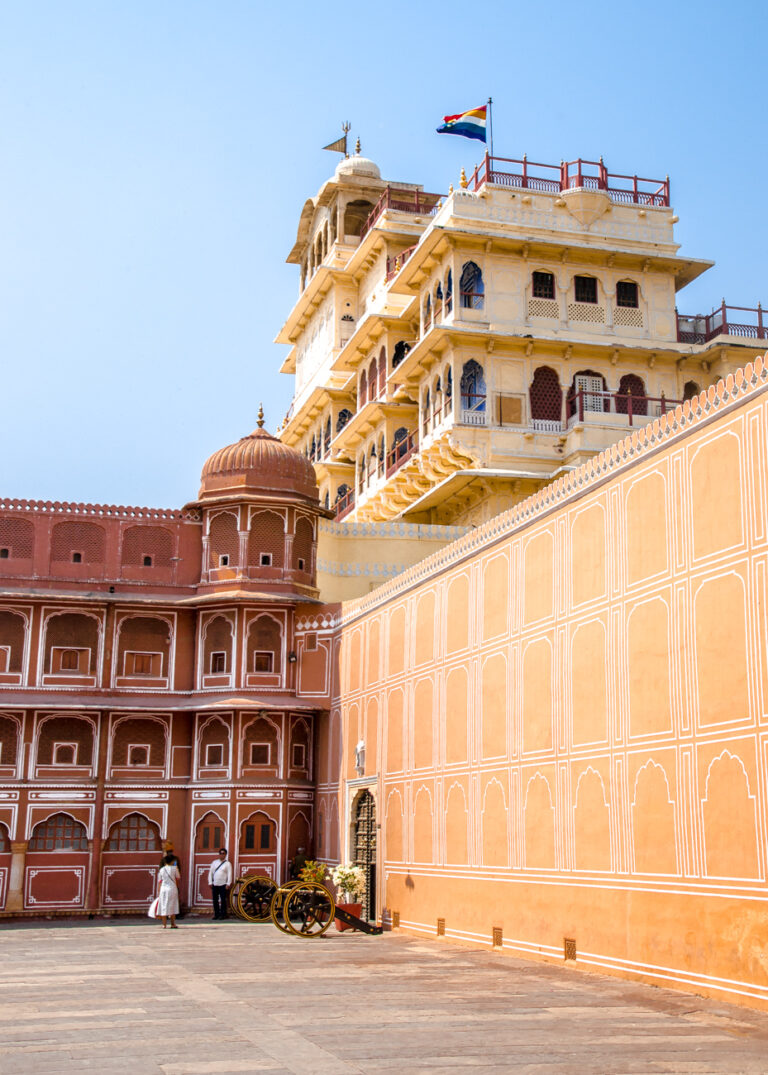
Spend an hour or so exploring inside the walls of the City Palace before heading to the strange and interesting site of Jantar Mantar nearby.
2. Jantar Mantar
- Price: Foreigner tickets are 200 INR and Indian tickets are 50 INR
- Opening times: 9am – 4:30pm
- Location: Here on Google Maps
Taking up an area of 4 acres, Jantar Mantar is an 18th century site built under the ruling of King Sawai Jai Singh.
Here there is a collection of 19 astronomical instruments that were used to calculate time and the movements of planets. It will be no surprise then that Jantar Mantar literally translates to “calculating instruments”.
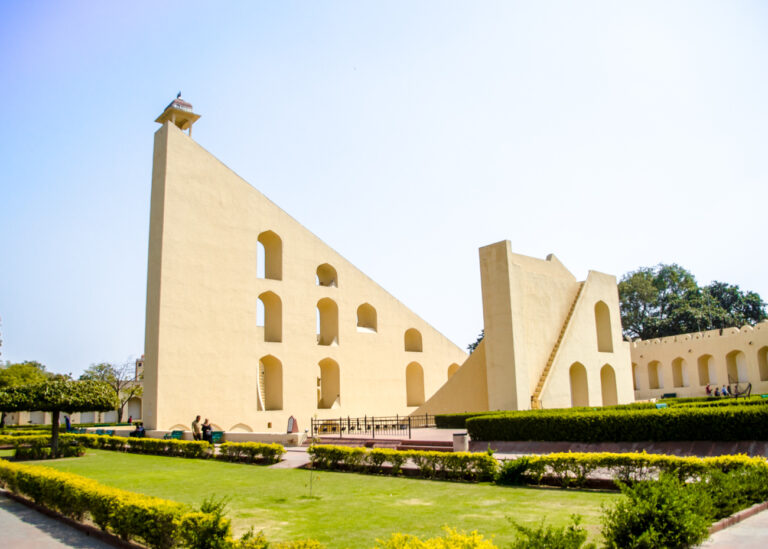
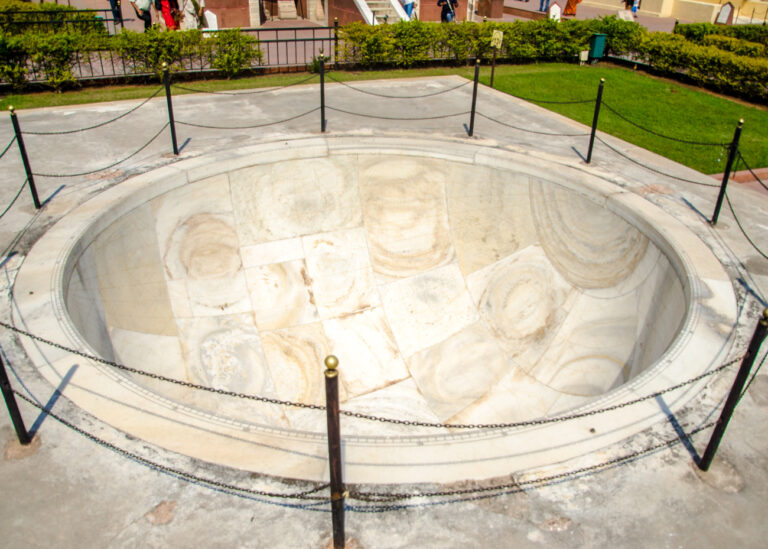
Among the many huge and mind-boggling structures is the world’s largest sundial that is accurate to 20 seconds and calculates the sunrise and sunset times.
This is one of the largest collections of astronomical instruments in the world, some of which are still used today, and a really interesting/weird/wonderful place to wander around!
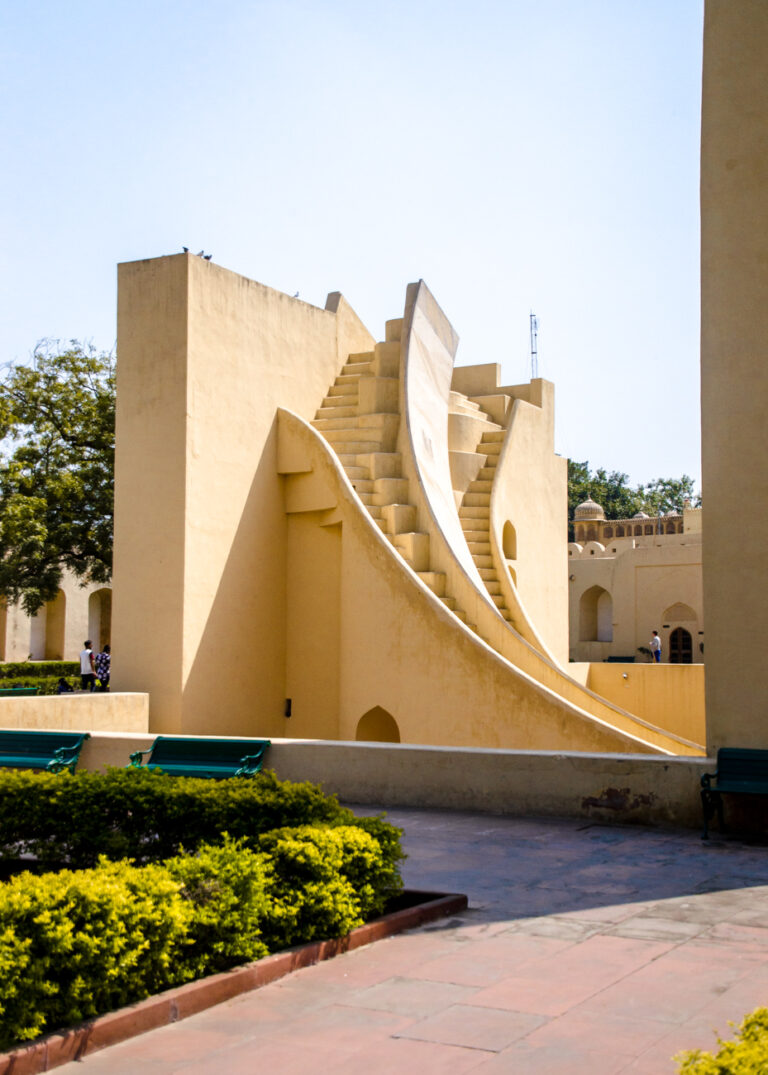
In total, I recommend spending around an hour to check out the cool monuments before heading round the corner to Hawa Mahal.
3. Hawa Mahal
- Price: Foreigner tickets are 200 INR and Indian tickets are 50 INR/ There is also an additional charge for photography of 30 INR for foreigners and 10 INR for Indians here.
- Opening times: 9am – 4:30pm
- Location: Here on Google Maps
Overlooking the bustling street and market below and located in the heart of the Pink City just around the corner from Jantar Mantar, it is almost impossible to miss the stunning Hawa Mahal, meaning ‘Wind Palace‘.
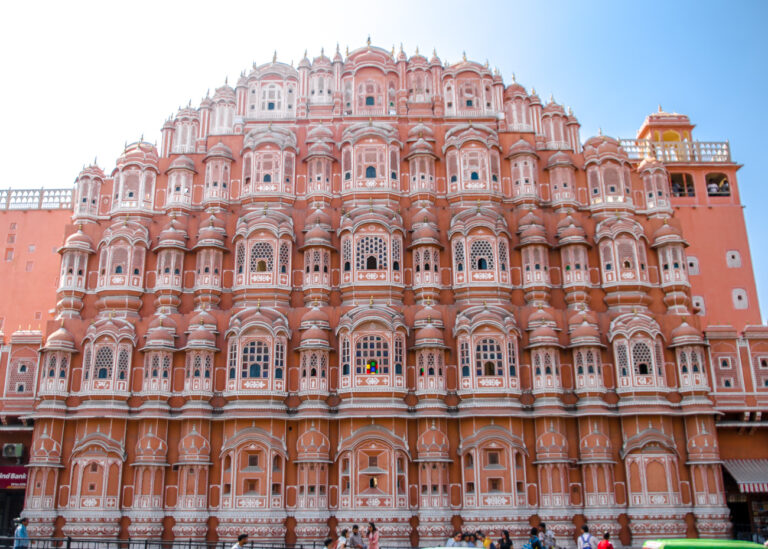
A visit to the Mahal is all about the architecture, both internally and externally.
What you see from the busy street below is a towering pink sandstone wall elaborately decorated with 953 jharokhas (windows). The exterior resembles a a beehive and is in the shape of Lord Krishna’s crown and the interior is a fascinating mix of Islamic, Mughal and Rajput styles.
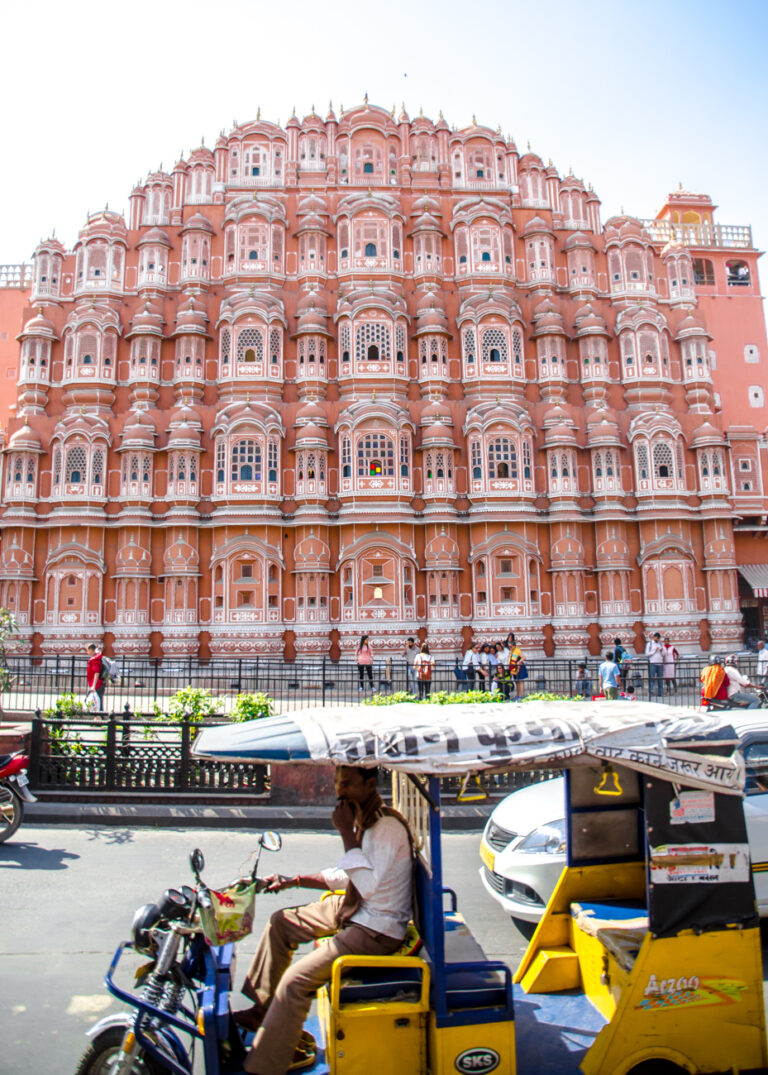
It was constructed as an extension of the City Palace and was used by royal Rajput women because they were forbidden to be outside in the daytime. From the abundance of balconies and jharokhas throughout the Mahal, the women could view festivals, parades and daily life without anyone seeing them.
One of the talking points of Hawa Mahal is that there are no stairs, despite it being 5 stories high! Instead, they used ramps to made it easier to carry the royal ladies from floor to floor.
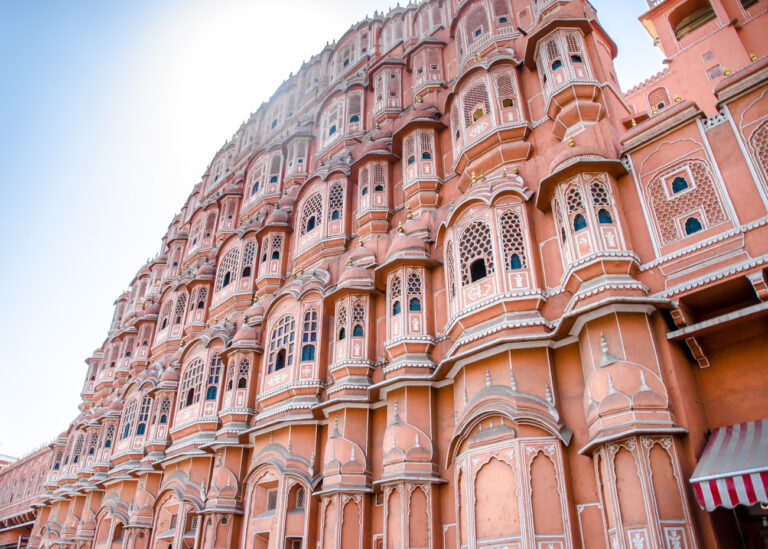
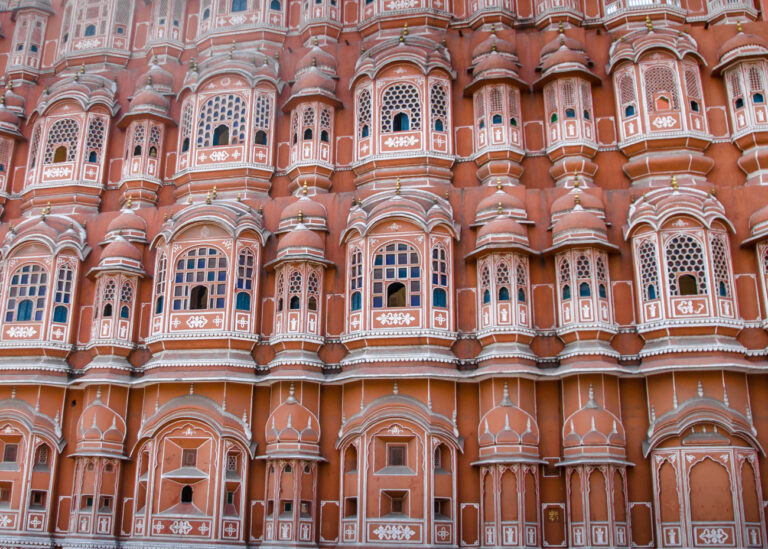
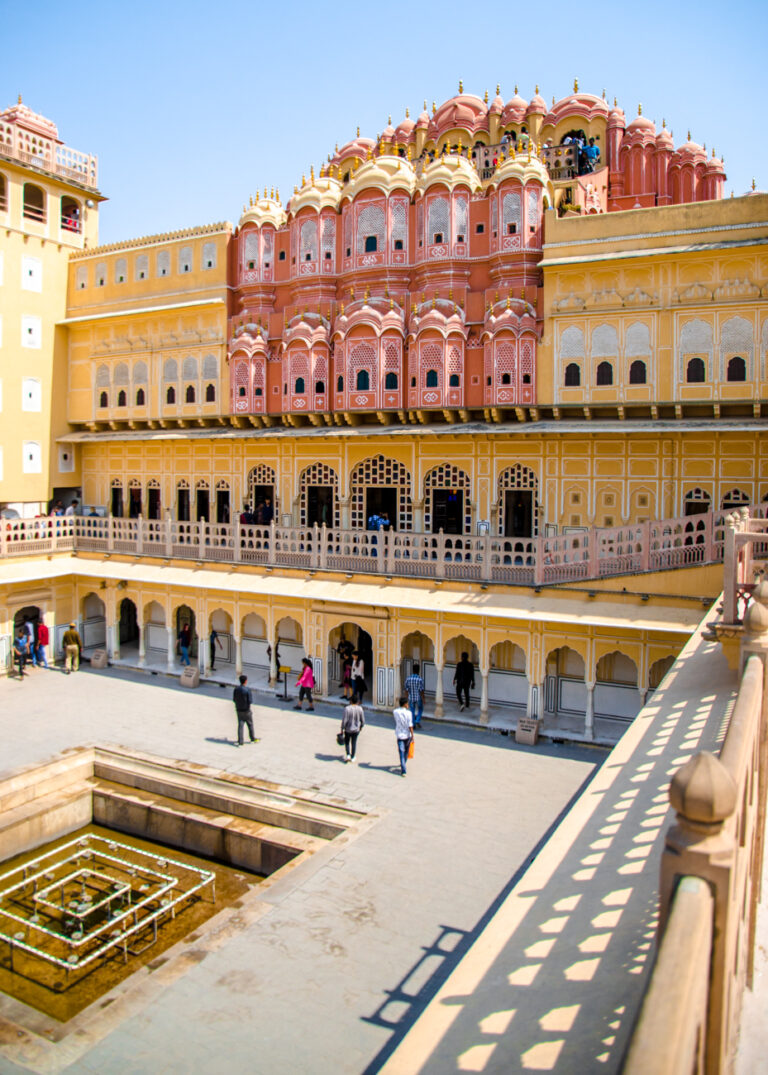
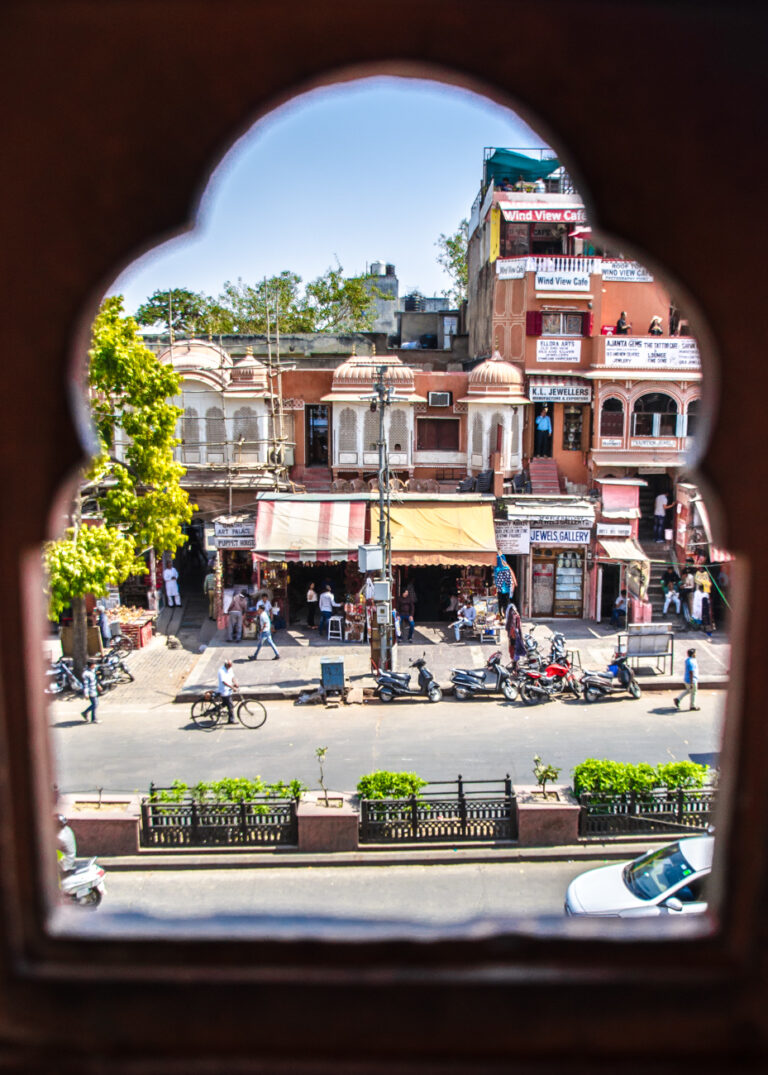
There is also the Museum of Hawa Mahal here that displays various antiques and weapons belonging to the old Rajput kings.
4. Jal Mahal
- Price: Free to view
- Opening times: Jal Mahal is not open to tourists
- Location: Here on Google Maps
Jal Mahal translates to ‘Water Palace‘ and is another iconic feature of the Pink City and one of my personal favourites.
As its name suggests, it sits surrounded by water in the middle of Man Sagar Lake and was constructed by Maharaja Madho Singh in 1750. It’s hard to believe, but he actually built it not as a place to stay, but instead as a resting place during duck hunting sessions! Not a bad place to put the feet up, I guess!
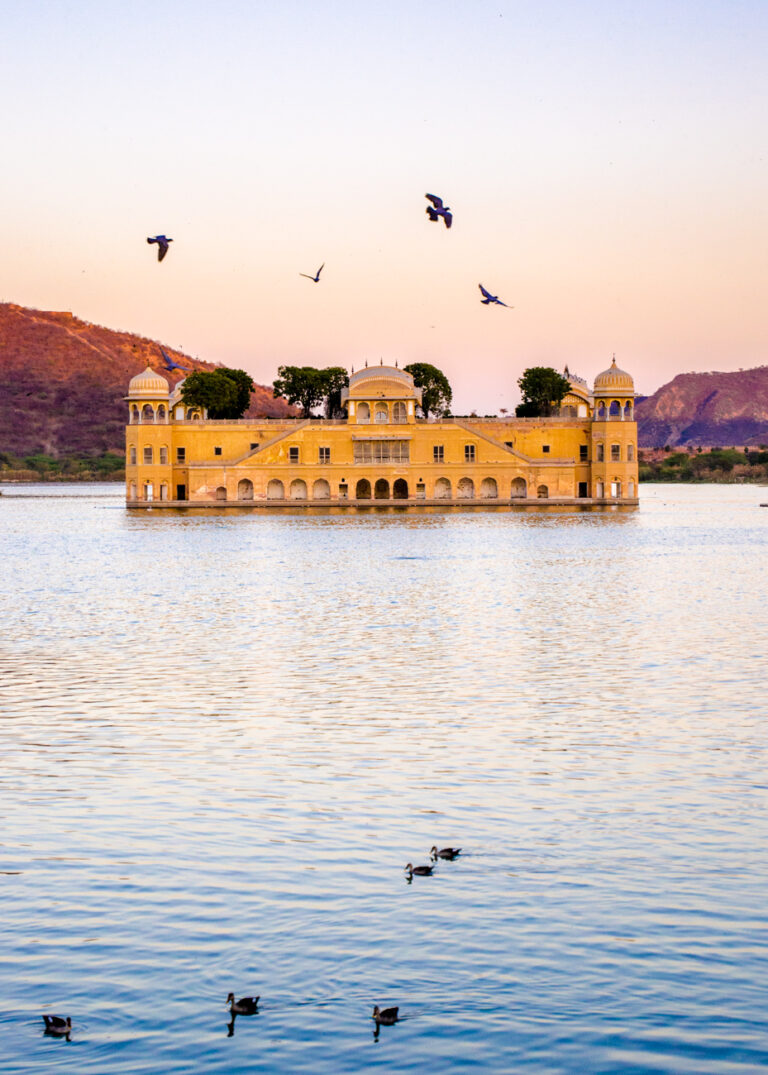
Although you can’t actually enter and see the inside of Jal Mahal, viewing the magnificent structure from the shoreline was one of my favourite things to do in Jaipur. In fact, I loved the scene here so much that I actually visited three times, mostly because my hotel was situated just across the road… but also because the colours were just irresistible!
Jal Mahal poses an unreal location to watch sunrise or sunset. With the local street-cows of Jaipur around you and the stunning mountainous backdrop behind the palace, you’ll quickly zone out the road noise from behind and focus on the chirping of the birds and the serenity of the calm waters ahead.
If only drones were allowed in India…
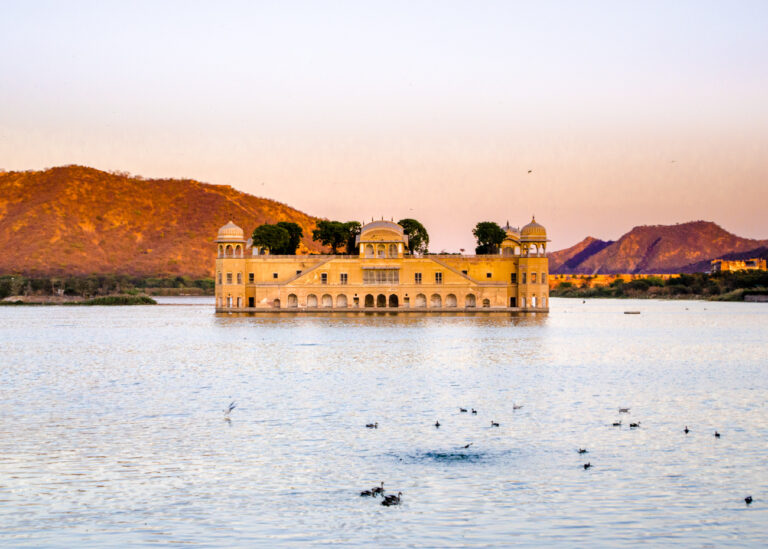
5. Peena Meena Step-well
- Price: Free
- Opening times: 24/7
- Location: Here on Google Maps
Catch an Uber to Amer early in the morning to beat the crowds to the next three locations!
Located in Amer about 10km from the centre of the city, Peena Meena step-well is an ideal quick stop before visiting the stunning hill-forts of Amer and Jaigarh that are also in the area.
Peena Meena Ka Kund is an awesome little step-well and somewhat of a hidden gem in Jaipur. Built over 400 years ago, this symmetrical feature was created to collect rainwater via an incredible system of steps.
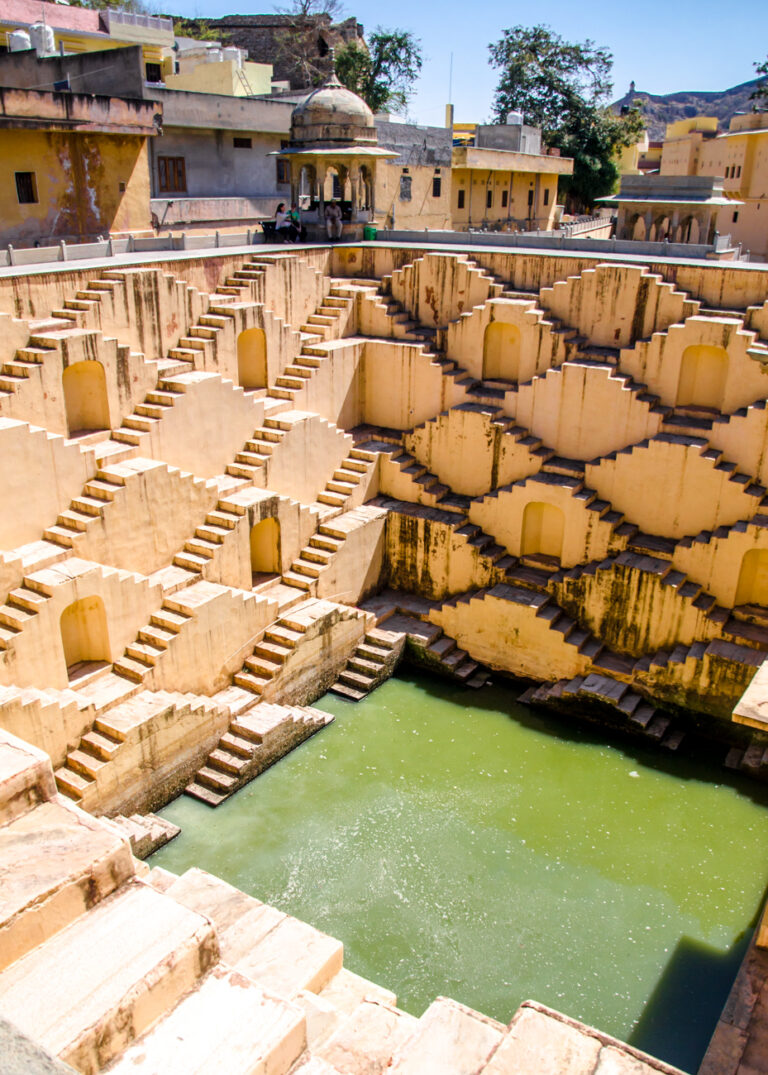
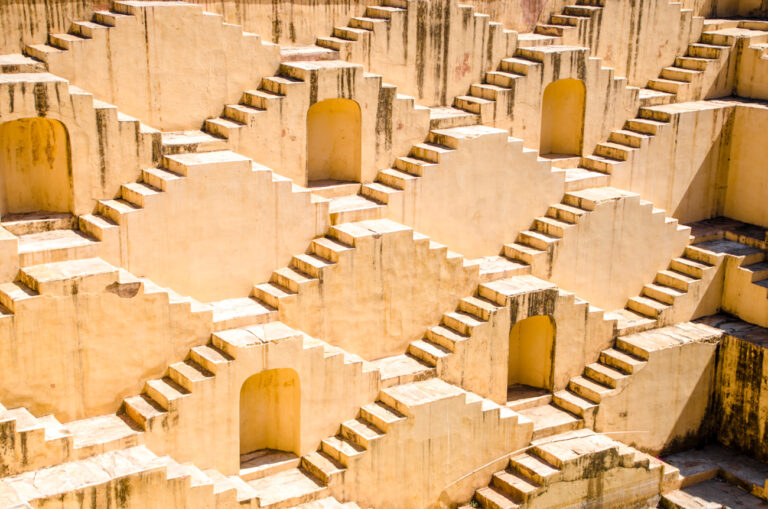
These days the step-well is a popular tourist attraction, but walking down the steps, which was once permitted, is now banned. The guards keep a watchful eye as they are fully aware of the ‘Instagramability’ of this landmark, and they’ll be very fast to usher you off if you do try. You could try to offer them money in order to snap a couple photos, but that’s a risk you’ve got to be willing to take!
We were blissfully unaware of these rules when I visited, so it was only seconds after I took the photo below that my partner was whistled at to get out!
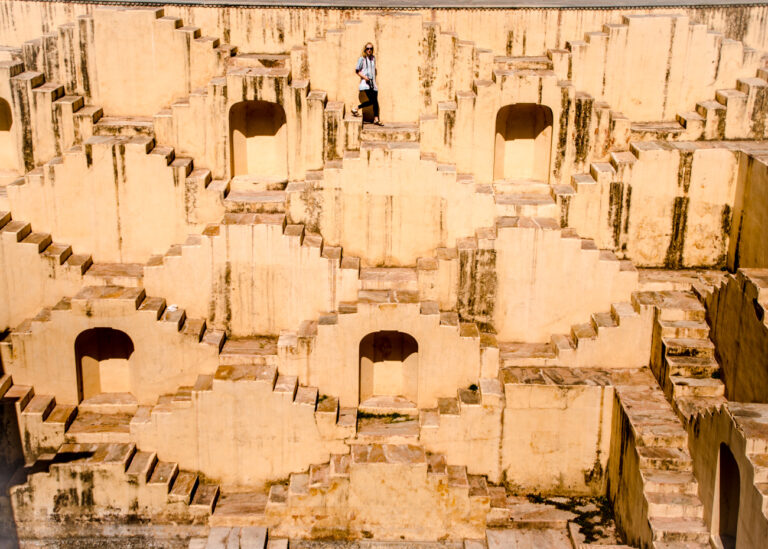
A quick stop at Peena Meena step-well is a worthwhile thing to do in Jaipur and it won’t take long out of your day. You visit purely to admire the architecture, so you only need to allow around 15 minutes here before heading to the nearby Amer Fort.
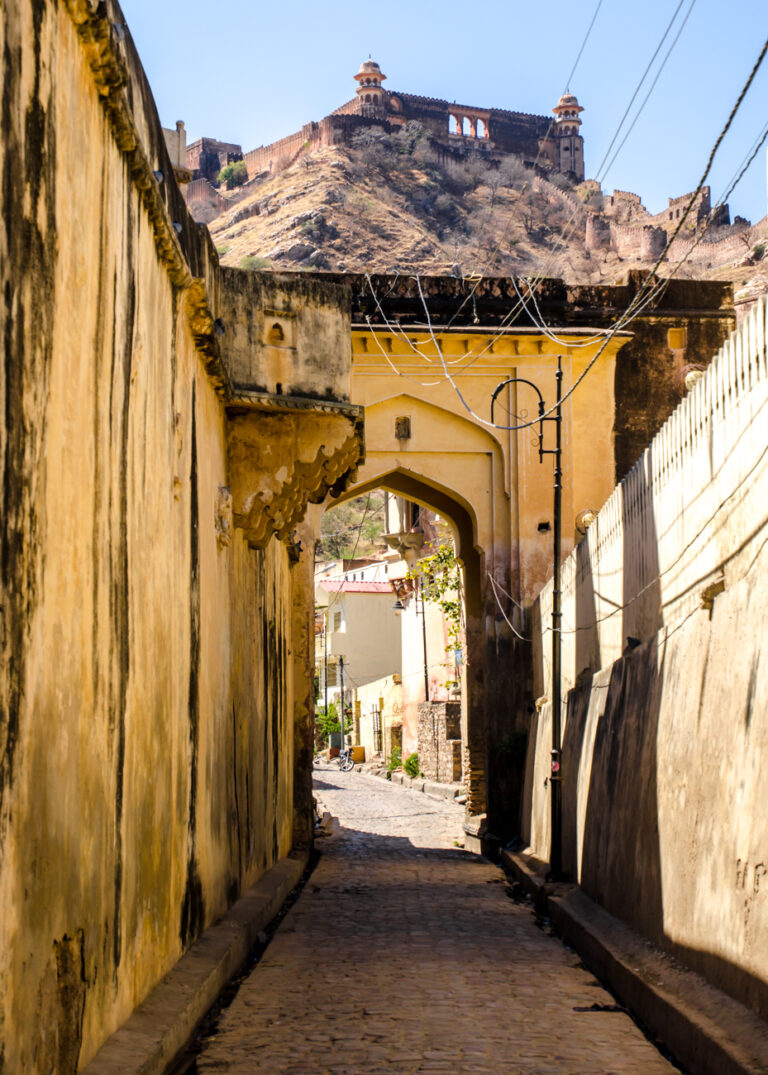
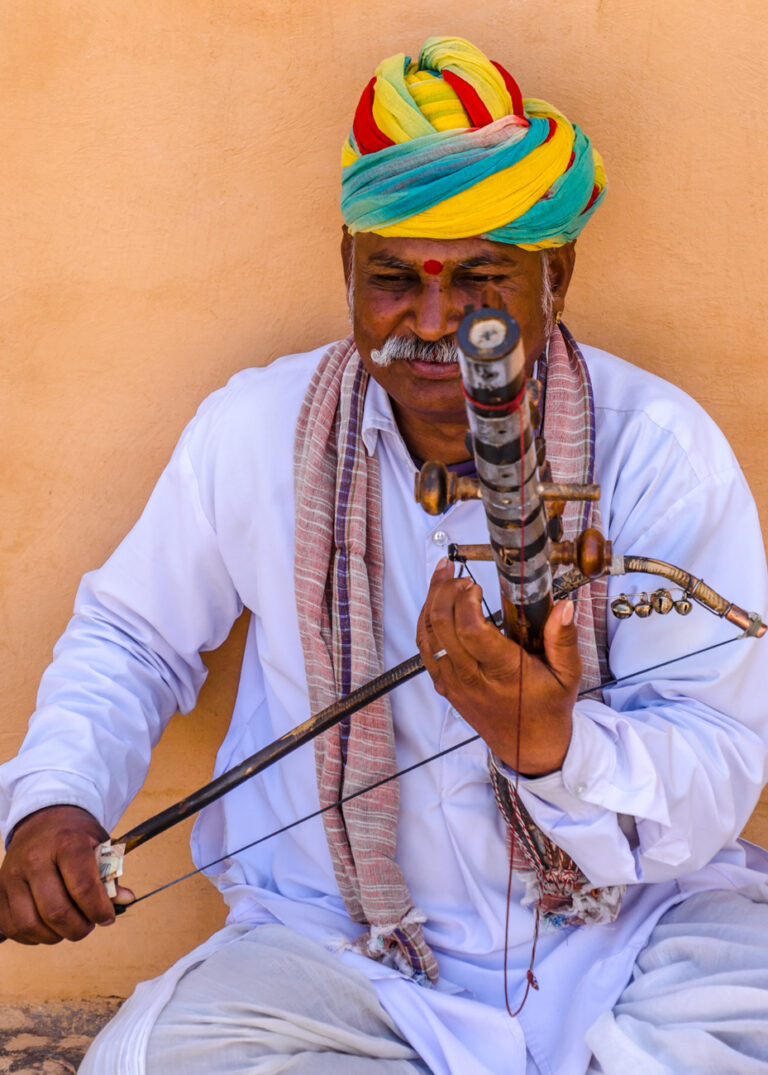
6. Amer Fort
- Price: 500 INR for foreigners and 100 INR for Indian nationals. Night Entry Fee into Amer Fort is 100 INR for both foreigners and Indians.
- Opening times: 8am – 7pm
- Location: Here on Google Maps
Amer Fort, or Amber Palace, is one of India’s most visited sights and arguably the most stunning fort in the country.
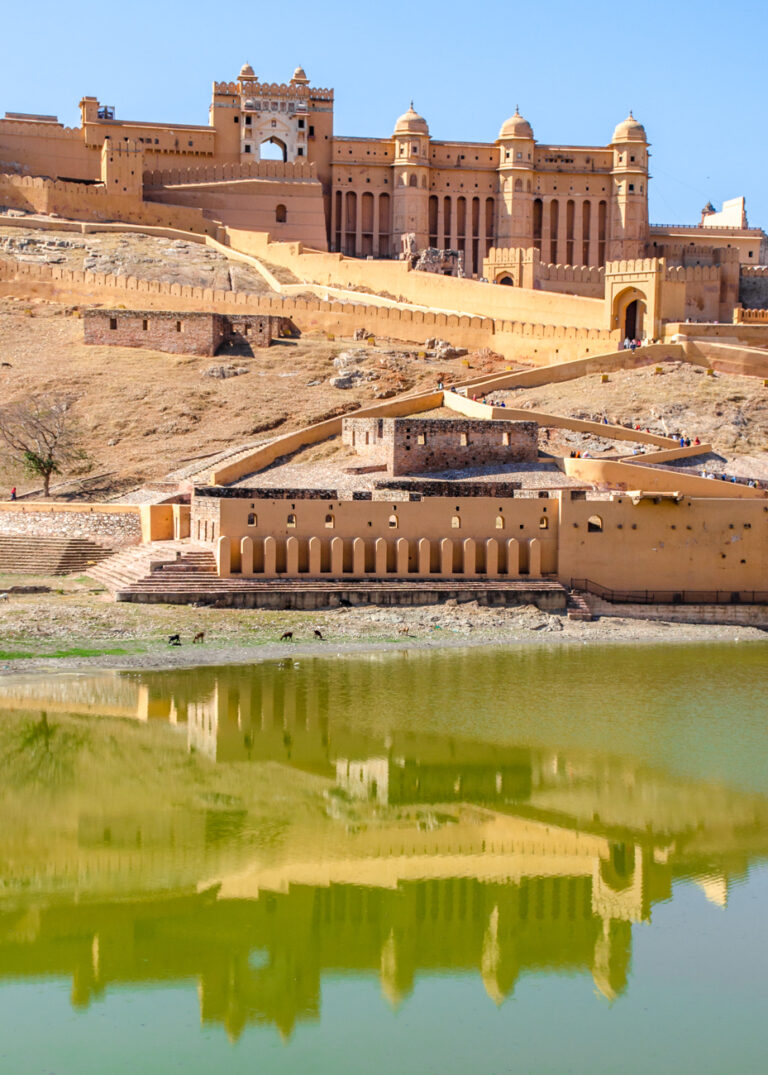
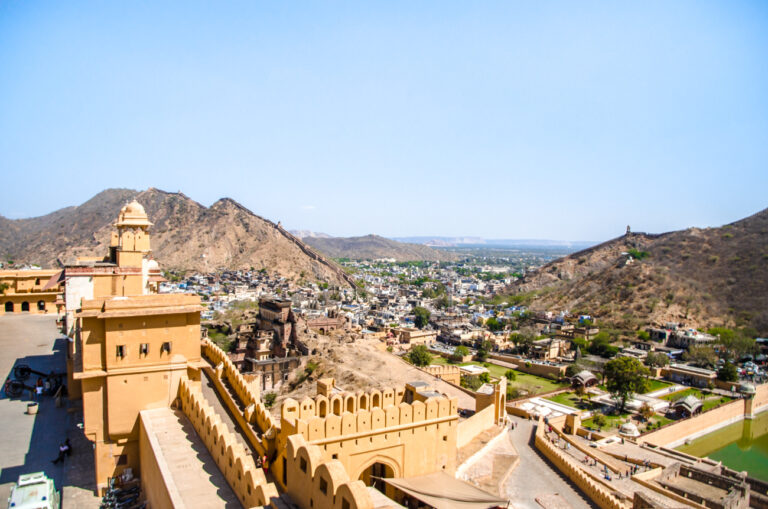
The fort overlooks the small town of Amer from the Hill of Eagles and dominates the northern skyline of Jaipur. It is picturesque in every sense of the word and is an absolute must-see destination of the city.
With sprawling courtyards set across four different levels, Amer Fort is made of red sandstone and marble and has been maintained well since it first opened in 1592.
There’s so much to see here that I wrote a detailed travel guide purely dedicated to Amer Fort, which you can read below.
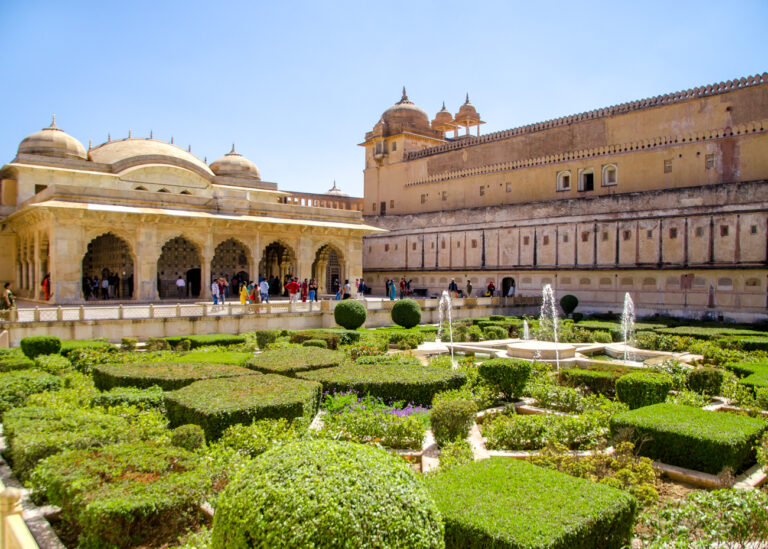
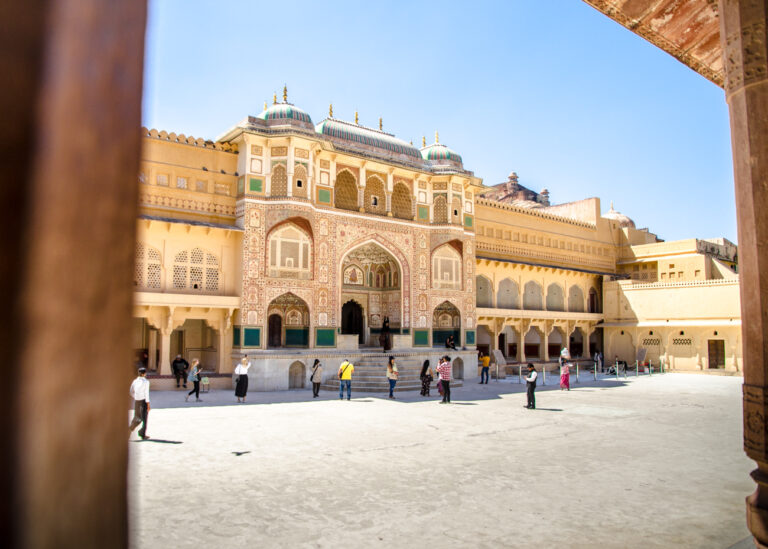
7. Jaigarh Fort
- Price: Foreigner tickets are 100 INR and Indian tickets are 50 INR, which includes a photography fee
- Opening times: 9am – 5pm
- Location: Here on Google Maps
On the hill behind Amer Fort and with an even more incredible view of the area lies Jaigarh Fort.
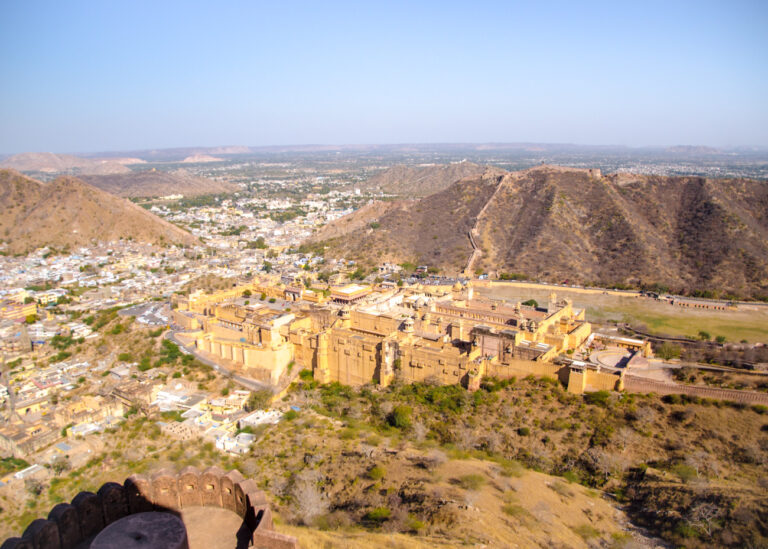
Jaigarh Fort was built to protect Amer Fort and is a whopping 3km long and 1km wide.
The forts are actually linked together by a ‘secret’ underground tunnel that was built in case of attacks. It only takes about 10 minutes to walk and is a cool way to get between the two, albeit sweaty!
In the main courtyard of the fort lies a square shaped floral garden which covers an area of 50m2, called Charbagh. This is the most notable feature here, providing some welcome greens amongst the sandstone and desert tones of the Pink City.
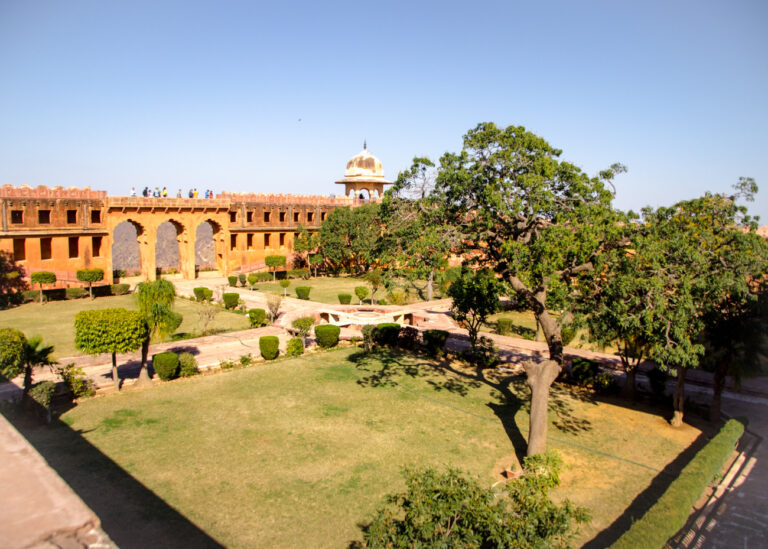
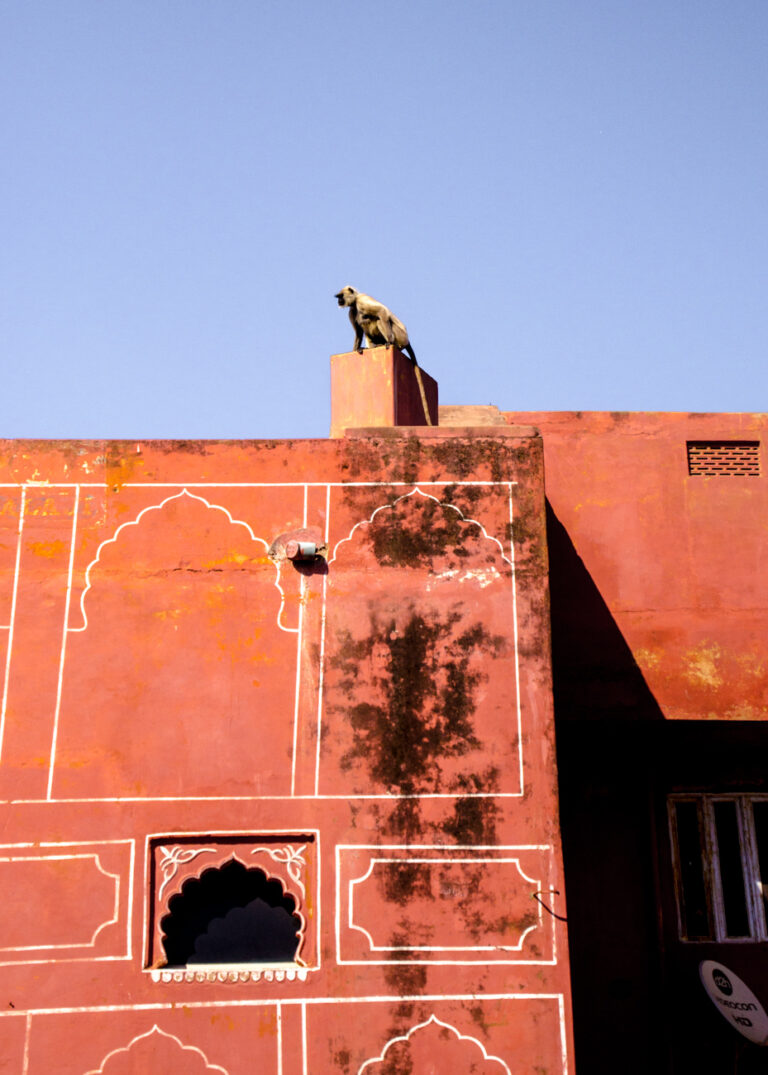
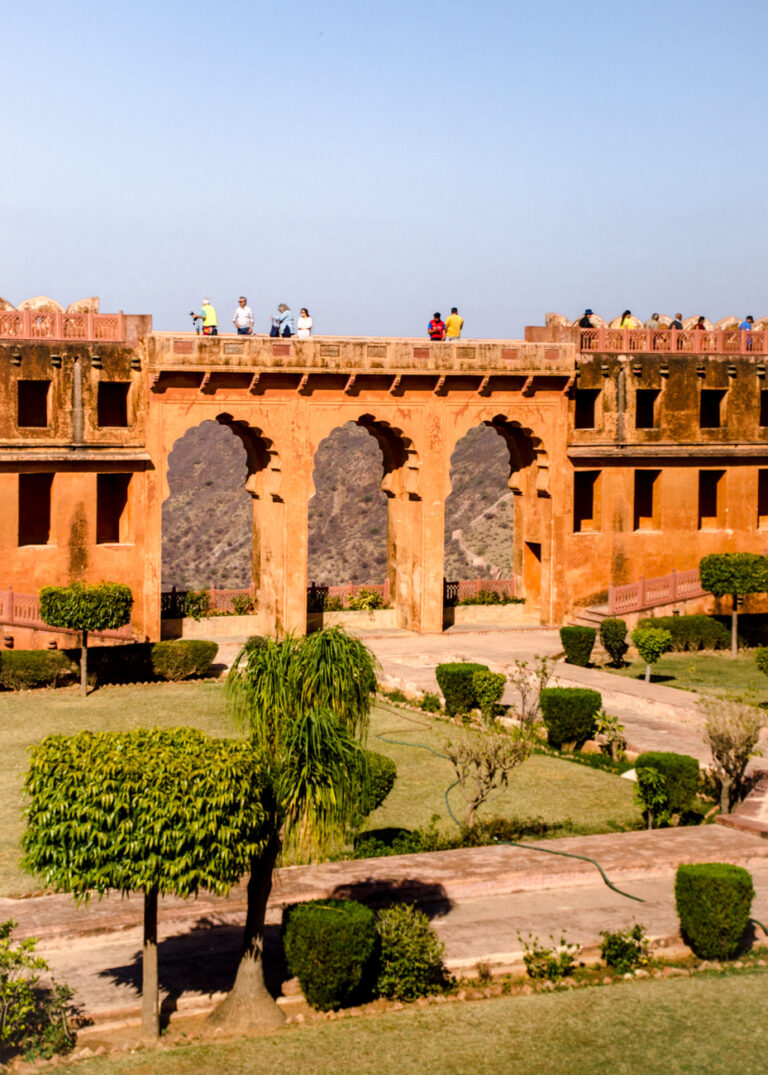
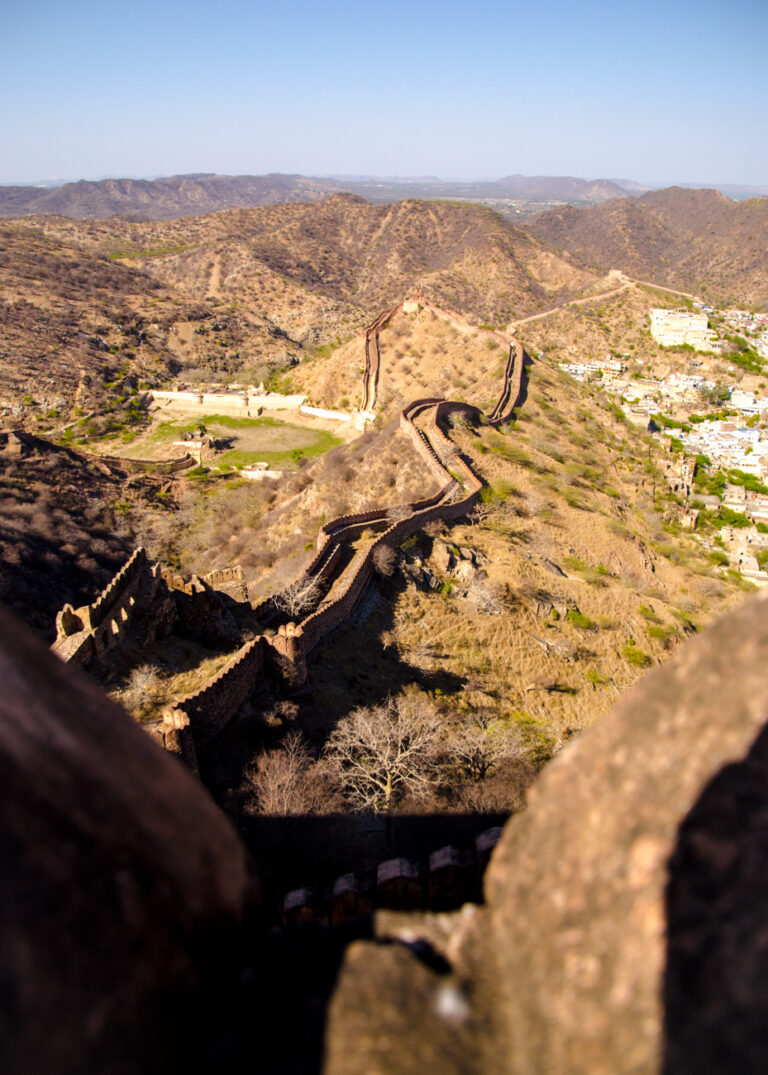
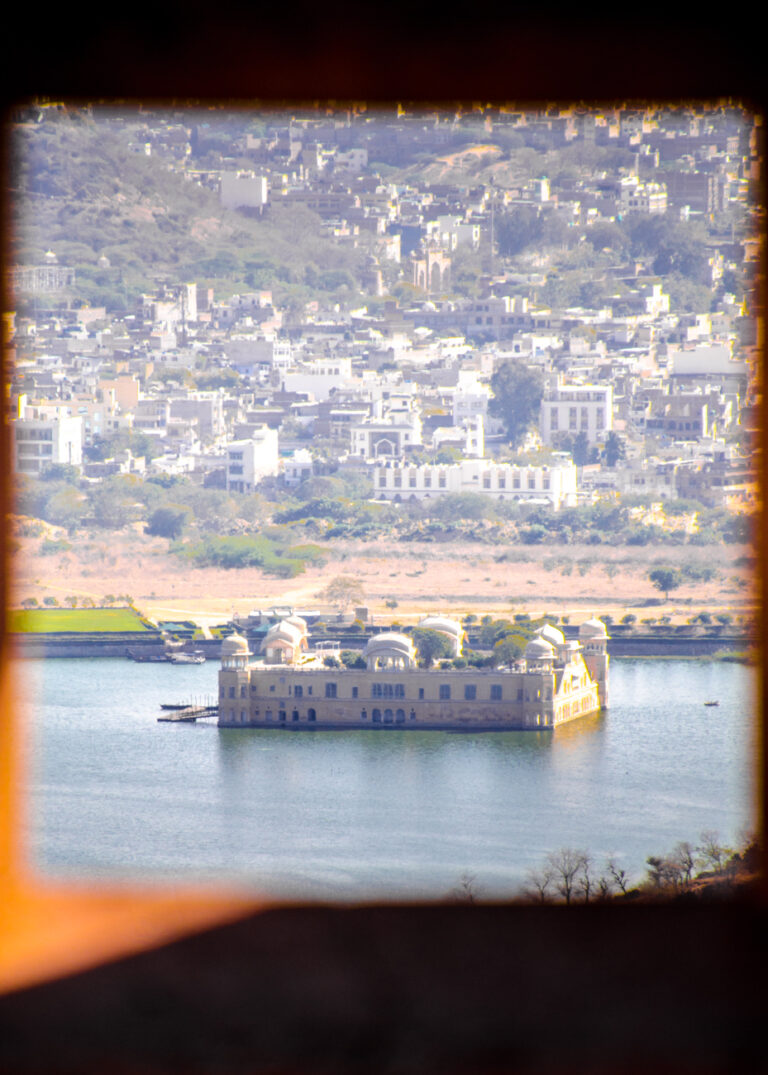
The fort features the largest cannon on wheels, called Jaivana, which was never used apart from in one test to find out its range, which was 35km.
There is also an interesting museum here which showcases old weapons and images of the Maharajas who ruled at the time.
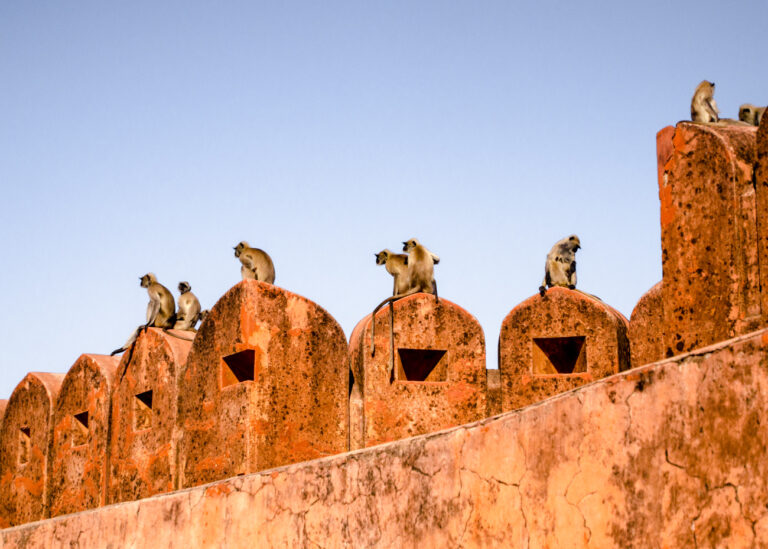
8. Nahargarh Fort
- Price: Foreigner tickets are 200 INR and Indian tickets are 50 INR which includes a photography fee
- Opening times: 10am – 5:30pm
- Location: Here on Google Maps
The third and final prominent fort to visit in Jaipur is Nahargarh, which was built in 1734 by Maharaja Sawai Jai Singh II, the founder of Jaipur.
As with Amer Fort and Jaigargh Fort, Nahargarh Fort is situated on a ridge of the Aravalli ranges, one of the oldest mountain ranges in the world, and was built as a defensive system for the city below.
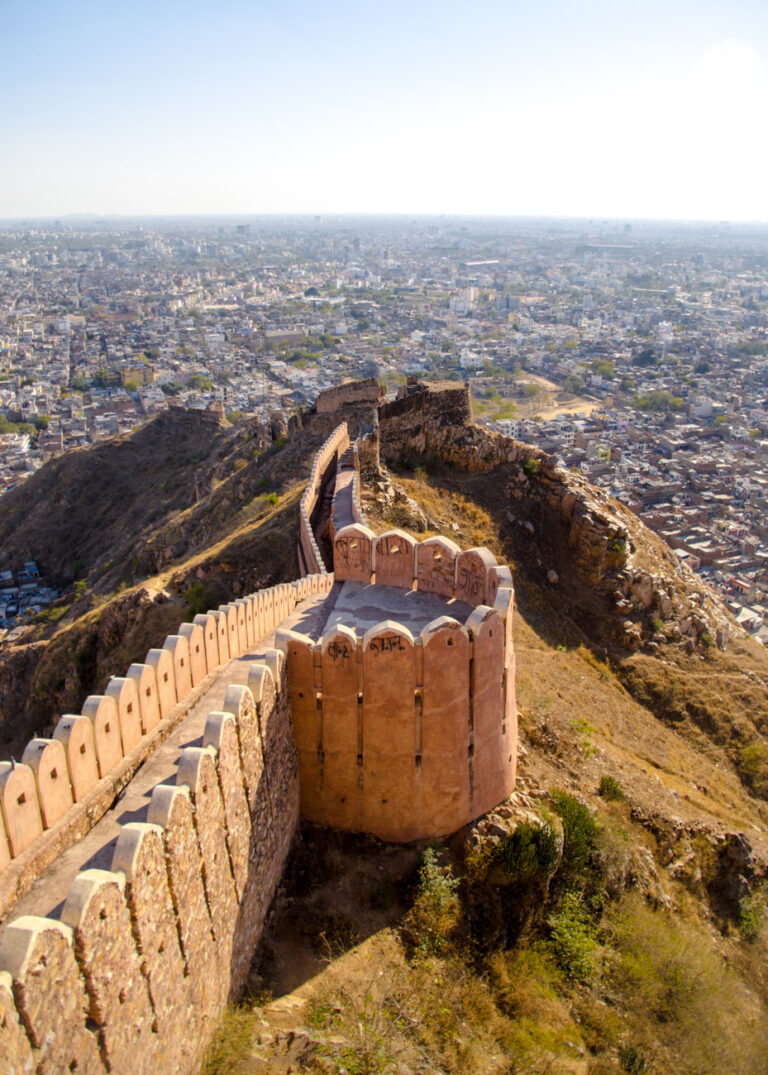
Inside the walls of the fort you’ll find traditional designs and a two-storied palace that’s loaded with a maze of corridors, courtyards and passages. This palace is called Madhvendra Bhawan and is where the king’s nine queens once lived. Yes, you read that right… nine queens! He even built secret corridors to get between their rooms unnoticed!
There are two step-wells within the walls of Nahargarh Fort which were used as fresh water storage systems in case of invasion and due to its hard-to-reach location.
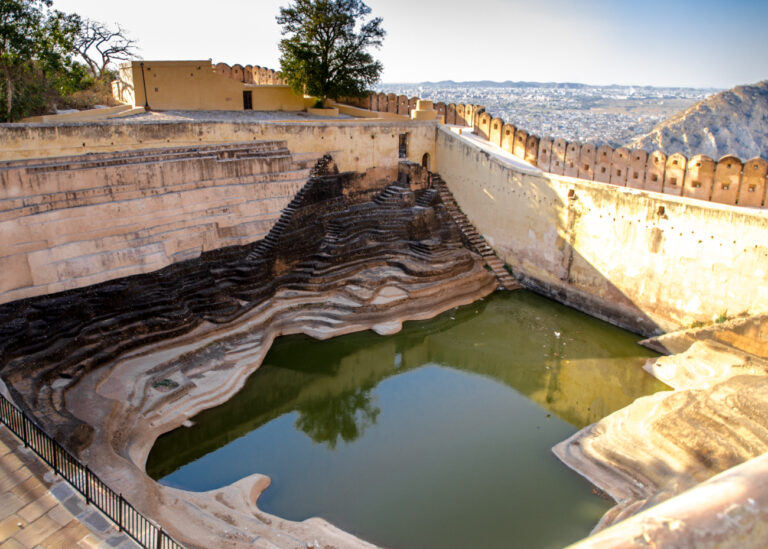
You’ll really feel like you’re on top of the world up here, and the magical perspective you get over the sprawling city from the perimeter walls of the fort is totally unrivaled.
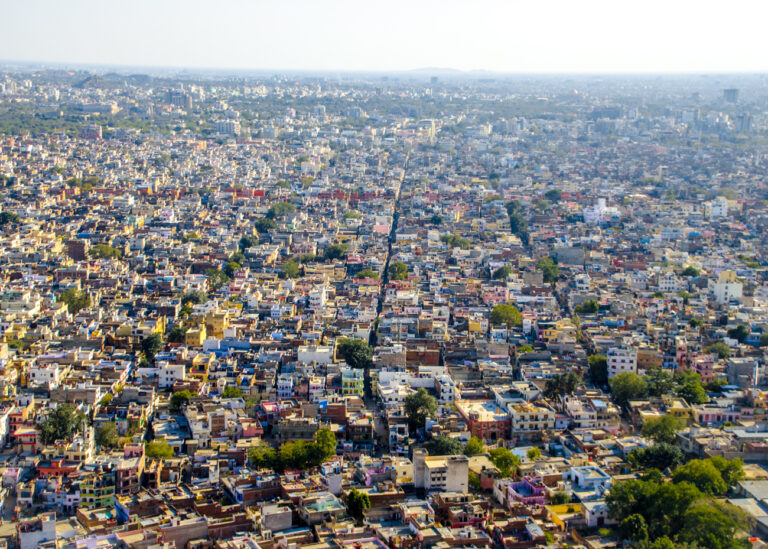
9. Albert Hall Museum
- Price: Foreigner tickets with an audioguide are 170 INR, or 110 INR for Indians
- Opening times: 9am – 5pm
- Location: Here on Google Maps
As with most of the best things to see in Jaipur, the Albert Hall Museum is famed predominantly for its spectacular architecture.
A former palace and now a museum, Albert Hall houses a large collection of artifacts, from traditional weapons and outfits to paintings and arts. Any history buffs will be well and truly in their element here!
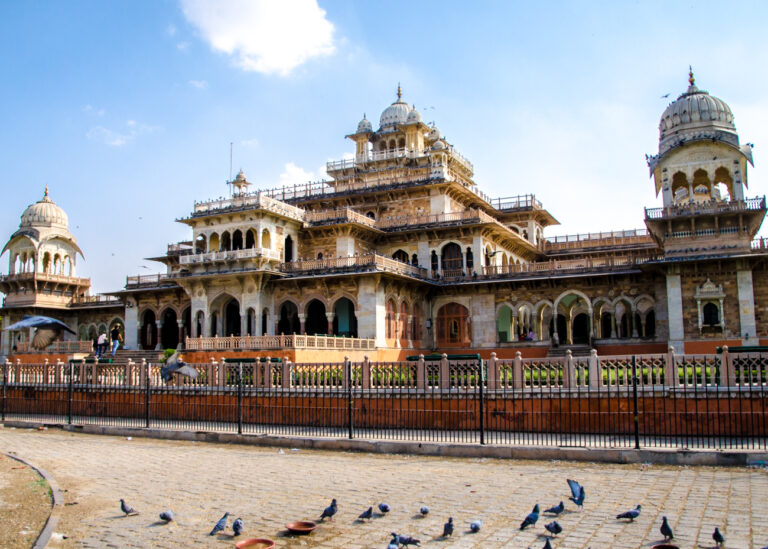
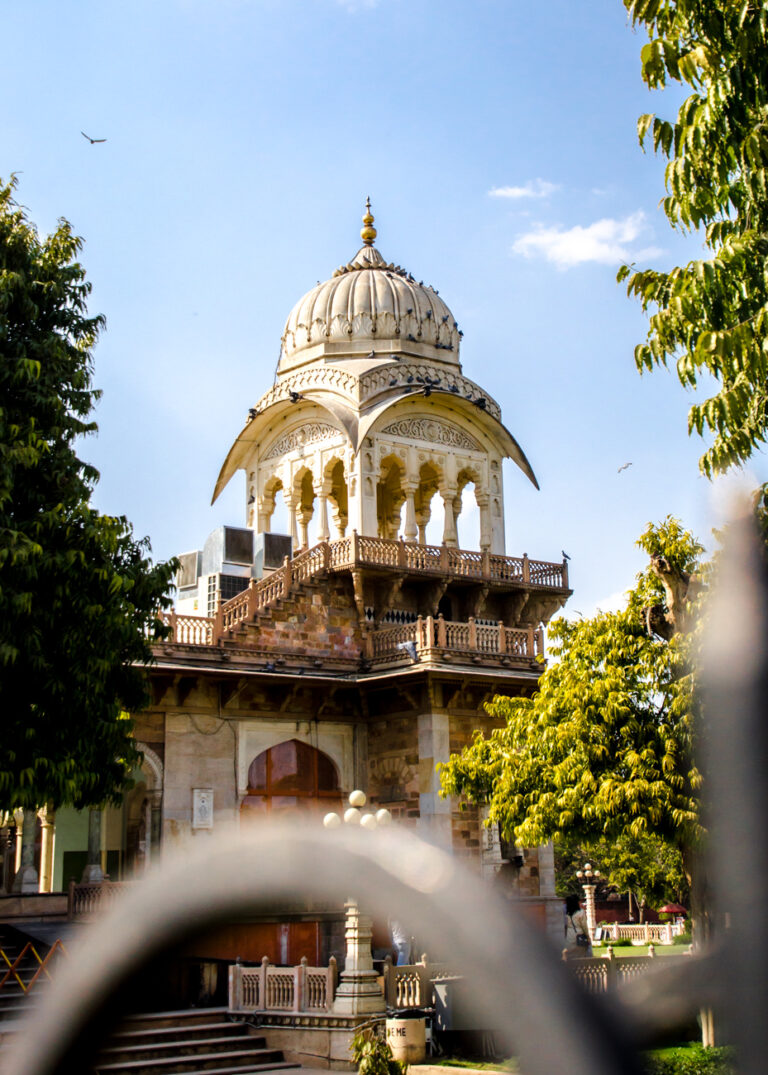
Top tips for India
Based on my experiences in the country, here are a few realities you’ll want to be aware of before you arrive in India.
- Aim to visit attractions early in the morning
The quietest time of the day is always as early as possible, and it’s no different in India. To avoid the biggest crowds and hottest temperatures, aim to be the first there (although you never will be!).
- Prepare to take a lot of selfies
- Try to leave the cities
- Clothing
Remember you are in a foreign country where religion is a very big deal.
You need to remove your shoes to enter most religious sites and wear respectful clothing throughout your stay. The reality is you will get a lot of people coming up to you regardless, so you don’t want those to be angry people because you’re flaunting too much skin! For similar tips that also apply to India, read this blog post.
- Don’t trust everyone
News flash – scammers do exist.
Most people are friendly, genuine and helpful, but keep your wits about you don’t be gullible. Unfortunately, some people will see you as a walking dollar sign and try to take advantage of your inexperience dealing with people like them. For example, it happened many times to me where I would jump in a rickshaw and request to go somewhere and they would instantly say “oh no, that’s closed today. Why don’t I take you *somewhere else* instead”. 99% of the time this was a barefaced lie, so it pays to look it up beforehand. I also found that many tuktuks will put the price up once you’ve arrived at your destination as well, and get quite aggressive when you question it. Again, I’m sure these are just city problems, but to be safe just use Uber.
Other things to look out for is being short-changed or for unofficial tour guides (sometimes security guards) to leech onto you, speak at you and then request large sums of money.
- Leave no trace
This one is easy. India is a hugely impoverished country and pollution is a large-scale problem. It does not need your contribution! Take your rubbish home.
India packing essentials
- International adapter: You will need an international plug adapter when you travel – fact. I use MyTravlPal which is ideal. Check out other options here.
- Water: Make sure you pack a reusable water bottle and take plenty of water everywhere you go.
- Travel towel: Having a compact and fast-drying microfiber travel towel is a backpacking essential!
- Portable power bank: Charge you tech on the move with one of these long lasting, high speed portable chargers.
- First-aid kit: Unfortunately things can go wrong in less developed countries where food poisoning is common and health and safety is less enforced. Make sure you put some Imodium in there for cases of Delhi belly!
For a complete list of what you’ll need in India, check out this post:

Thank you for reading this travel guide – I hope you found it helpful! Feel free to leave a comment below if you have any questions and I’ll get back to you as soon as possible
Happy travelling!
HELPFUL RESOURCES FOR PLANNING YOUR TRIP
Accommodation: Booking.com, Hostelworld
Tours: GetYourGuide, Viator, Klook, TripAdvisor
Transport: 12Go, Omio, Trip.com, Rome2Rio
WHO IN THE WORLD IS JAMES?
Click below to learn more about my story, including 5 random facts about me, some travel FAQ’s and my entire travel history.

